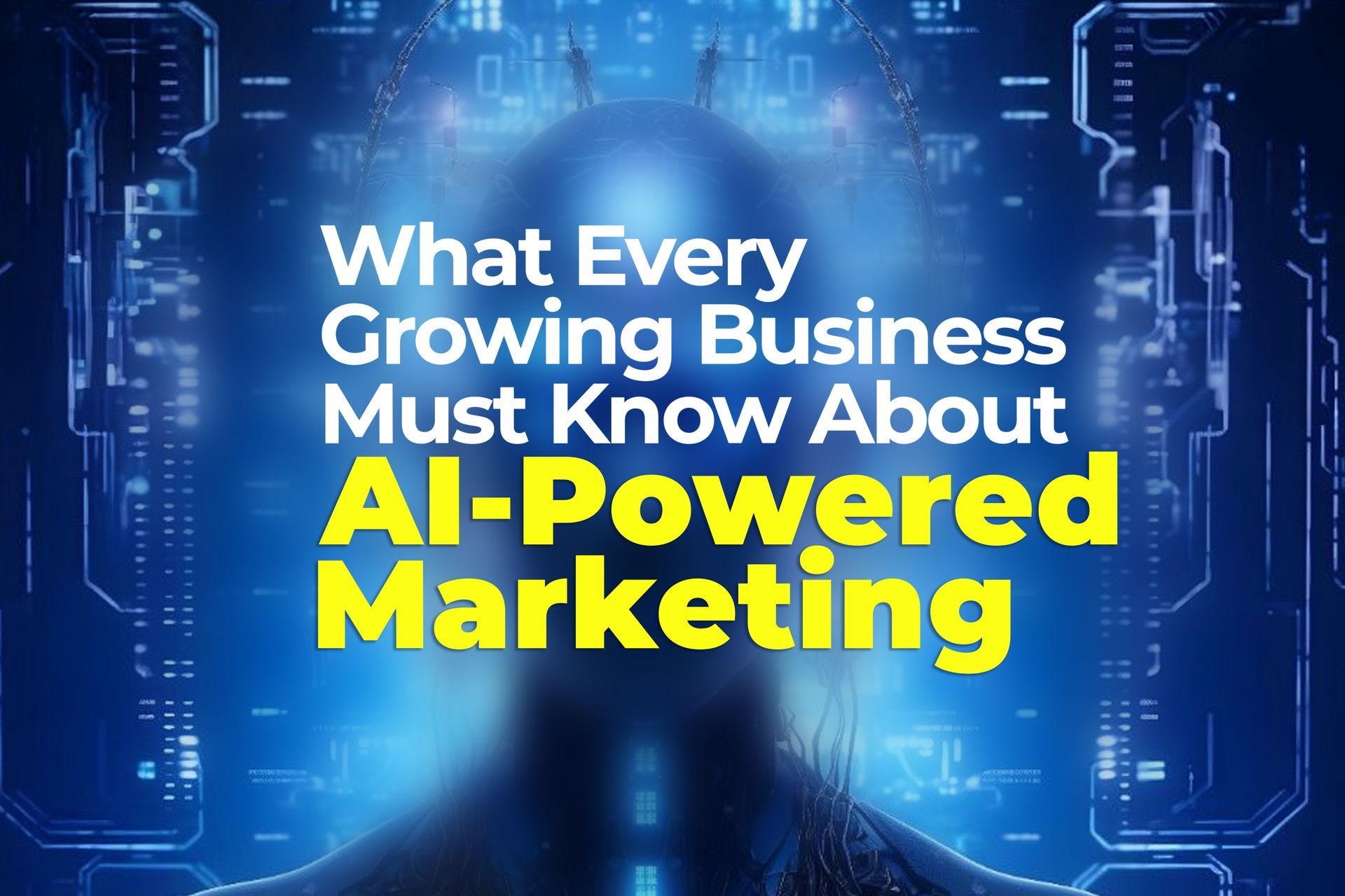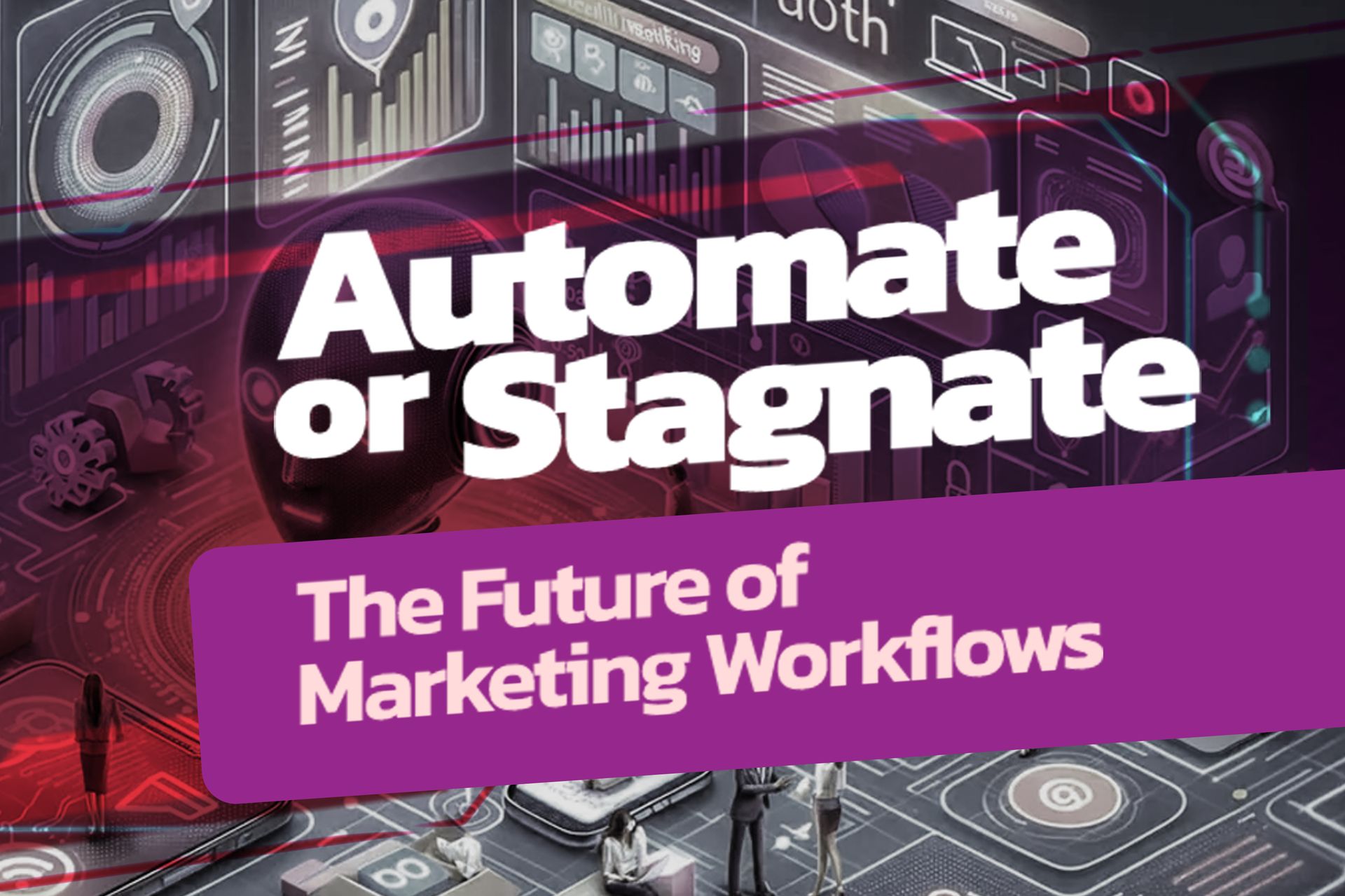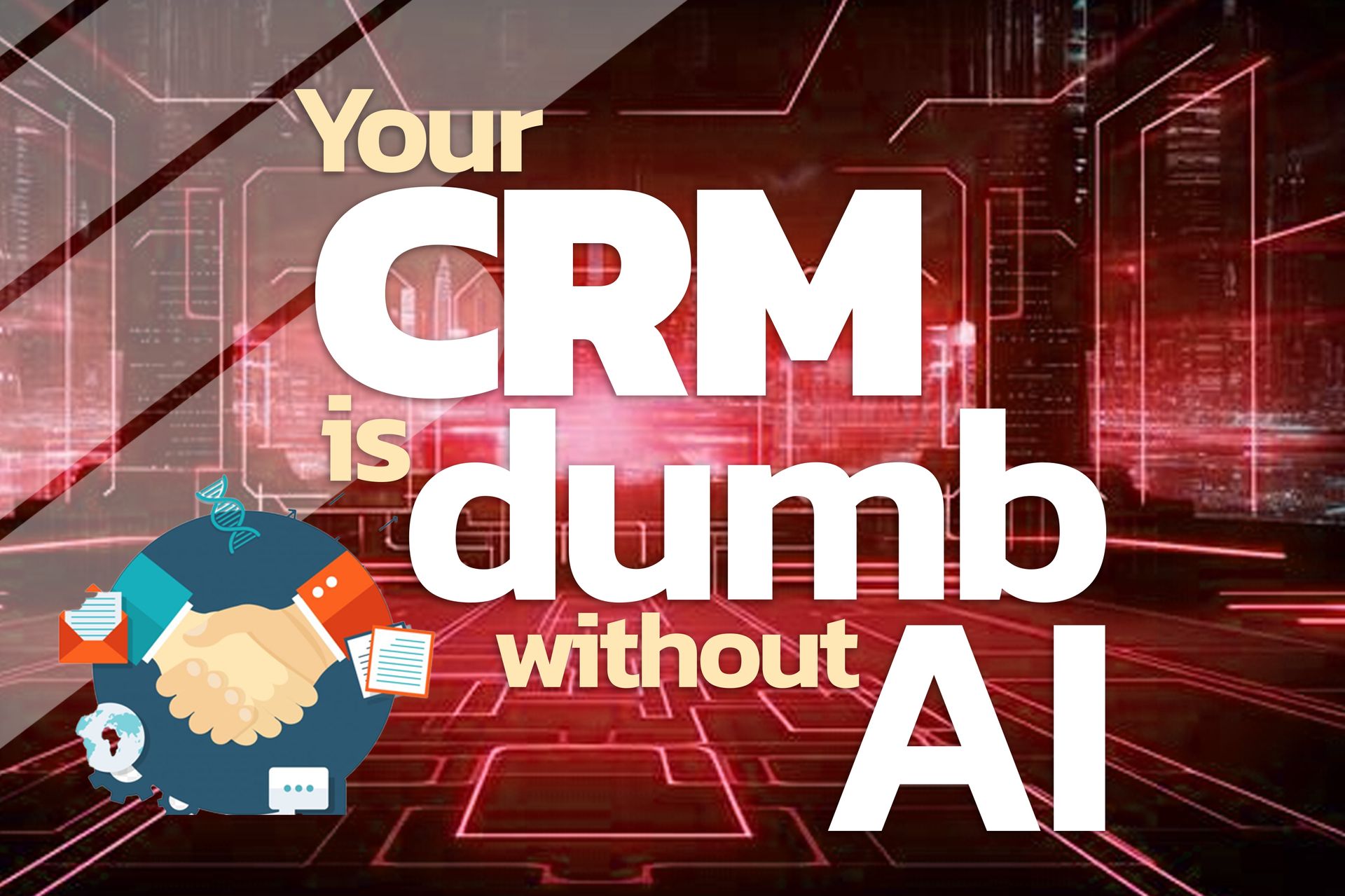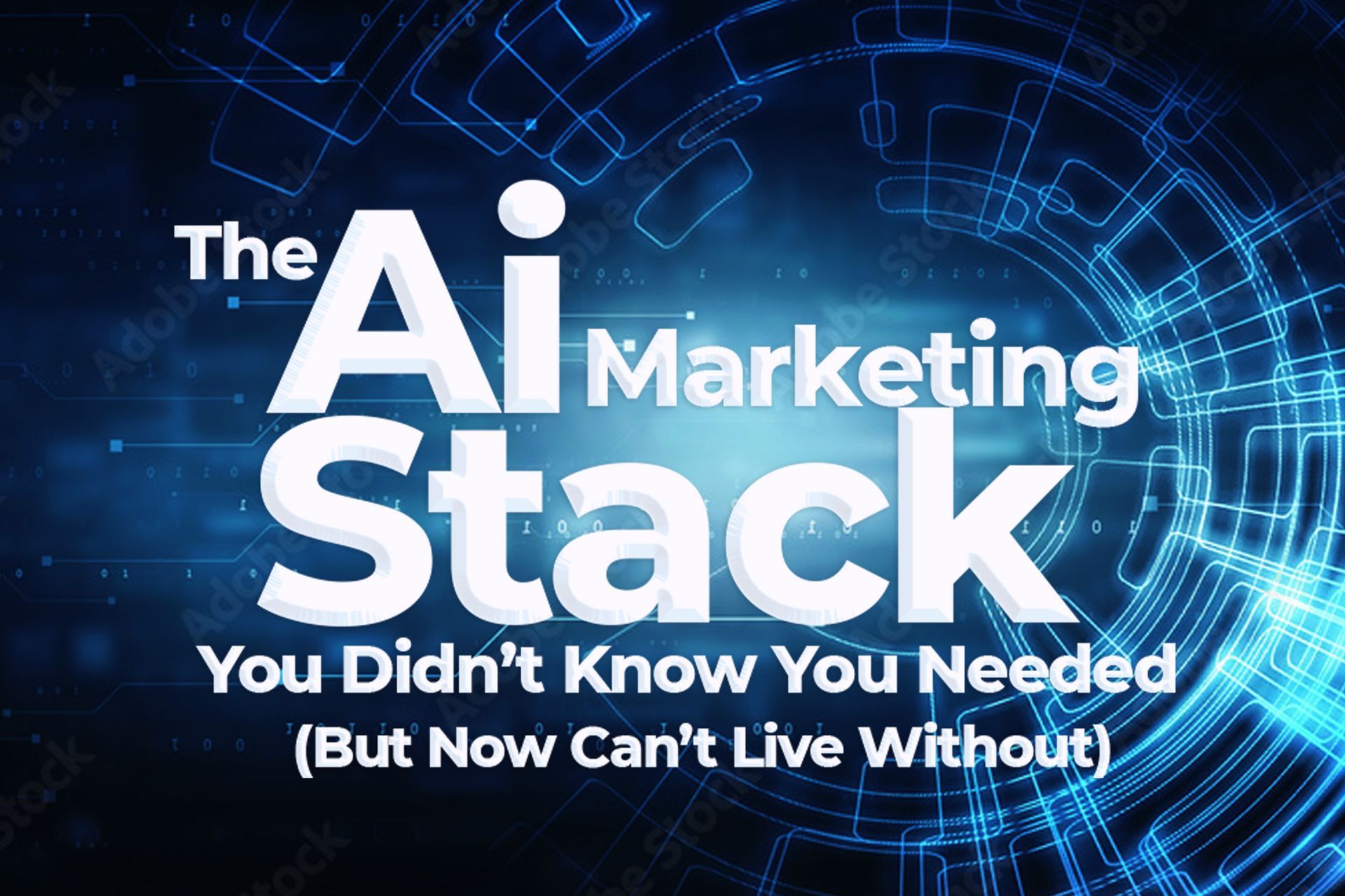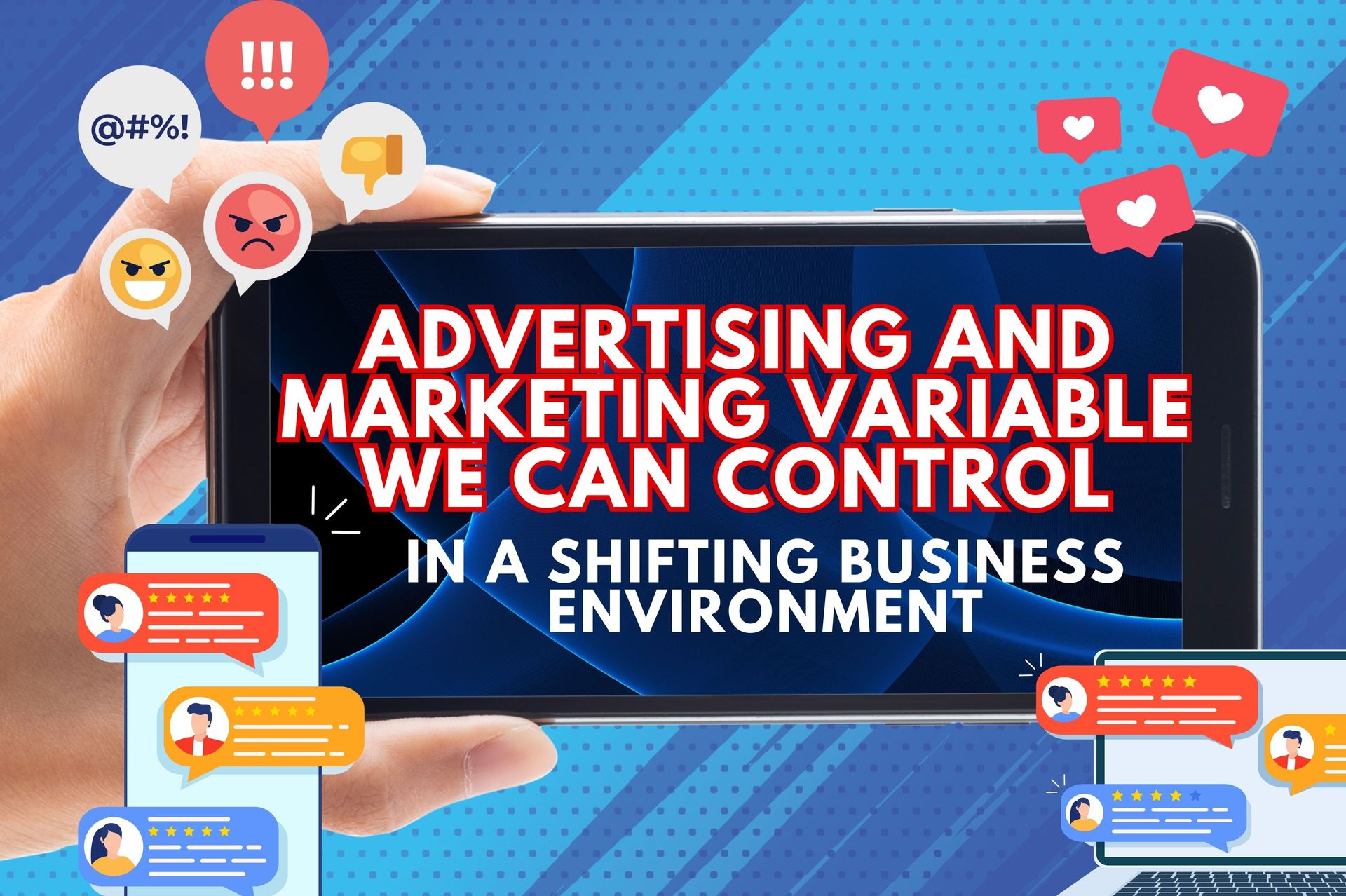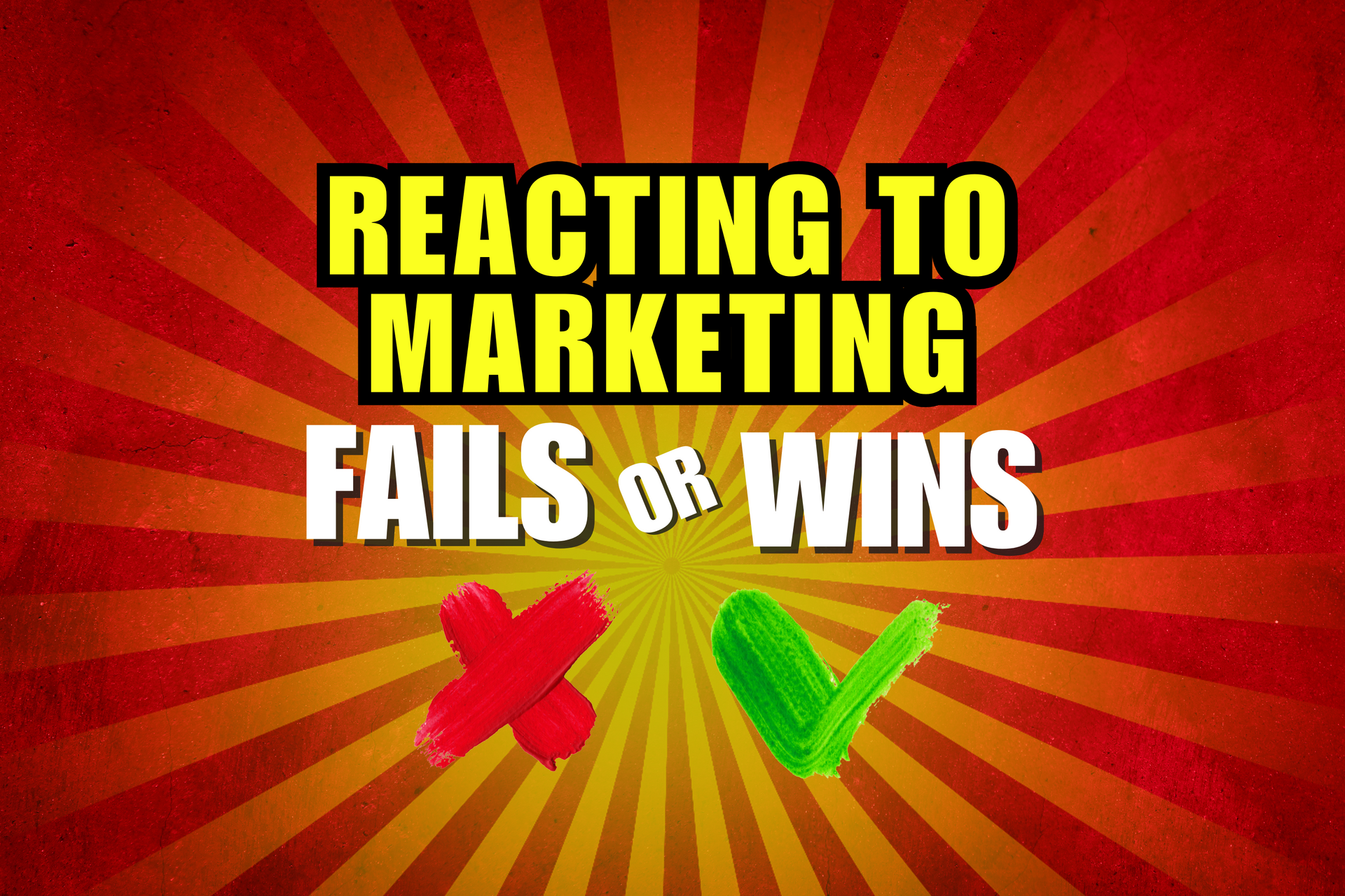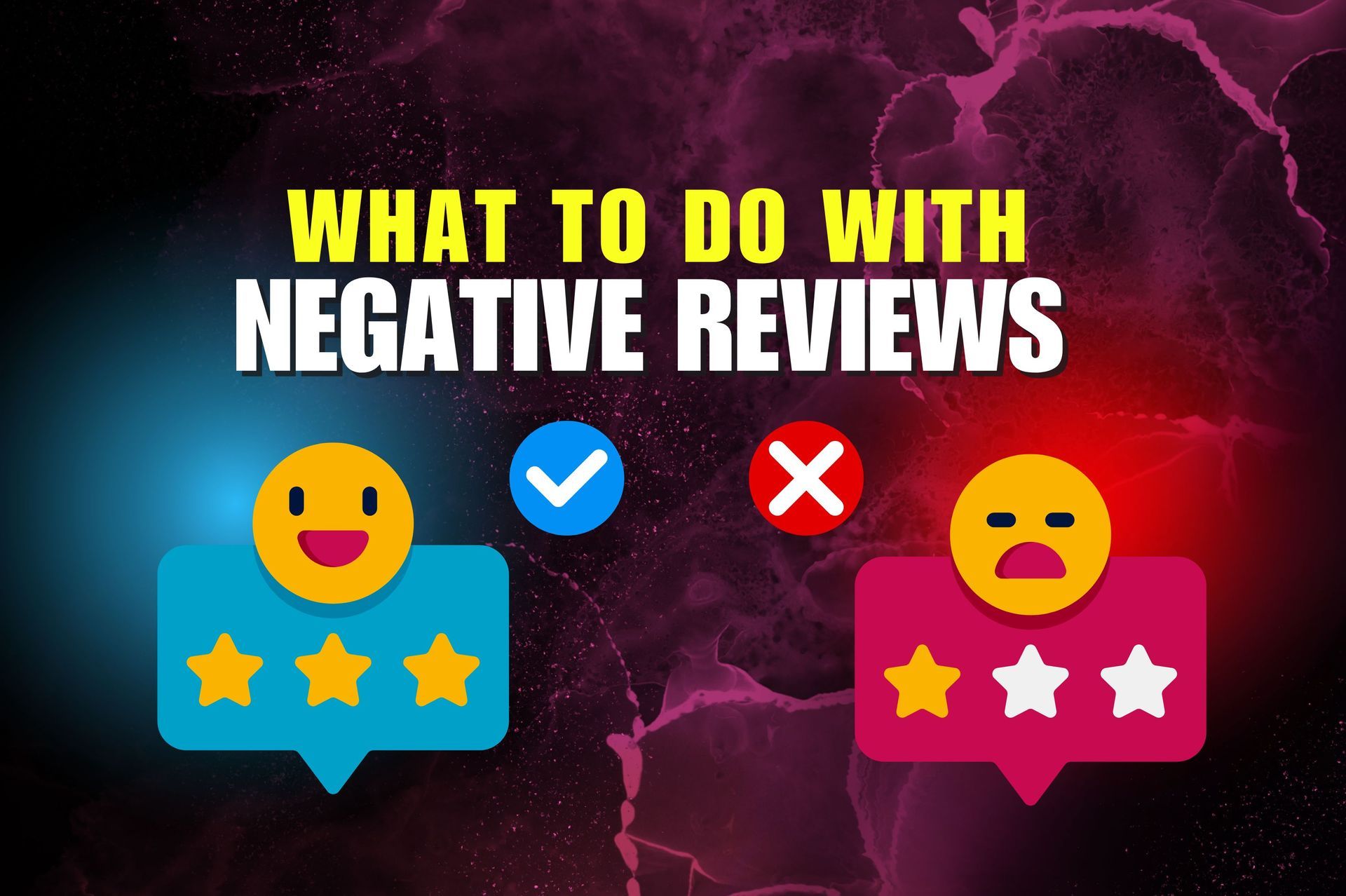Ways That Email Marketers Lose Subscribers
Ways That Email Marketers Lose Subscribers
Welcome back guys. Are you struggling with low open rates on your emails or just kind of duds not getting any results, losing subscribers faster than you can sign them up, which is an attrition problem. Let's unpack all that stuff and how to fix it right now. Email marketing is powerful, but too many marketers make the mistake of driving people away or making a stuff just absolutely garbage so that it doesn't get any engagement or clicks. So in this video, I'm going to break down the biggest offenses. Let's call 'em problems or screw ups. That can cost you subscribers. And even worse than that, just cost you sales and opportunity because that is the name of the game, alright? Email marketing can be one of the most powerful mechanisms to drive revenue, especially when your business or maybe your client's business needs to put some cash in the drawer.
Email marketing in my view, and I think many people in my position would say it's the fastest way to do that. You really can get right to your customers, get right to the list and prospects and so forth that have signed up with you and hopefully if you're doing it well get some conversions sometimes within a matter of minutes, which is really exciting. So let's go through the first one. This is a big debate. Too many emails. I'm sending too many emails and yes, there is a threshold at the point where you'll piss people off, but there is another component to that and I would qualify with too many irrelevant emails. There's almost no amount of emails you can send so long as they are relevant and important to the person that's receiving them. Now how you determine that is probably for another video because that involves programmatic stuff and different things like that where we can detect receptivity.
But in general, if you send stuff that's not relevant, you're just aggravating people and we all have experienced that in our inbox and that's where you're going to get low engagement, low open rates and a lot potentially. And what you don't want, because it kind of messes with your list of course, and your deliverability is people marketing it as spam. So how do you do that? Well, for one, make sure that no matter what you do, you're sending out emails that are important either topically or about the product and so forth to the people that are receiving them. Just don't send a bunch of crap. That's the first thing to be sure you're doing. And then the other thing is, yeah, don't hit 'em with too much stuff in one week. So frequency fatigue is real and too many emails can make subscribers unsubscribe. So in general, I would say if you had to put a rule of thumb on it, max kind of two to three a week.
But here's the thing, you can test that and the downside is also bad. Not enough means your list is cooling off and forgetting who you are and potentially engaging with your competitors, looking at other stuff, spending money other places. So we have to kind of walk that tightrope there, be top of mind, relevant present on a weekly basis, but not so much that you become like a nuisance and just a pain in the butt. And if you want any sort of examples of that, you want guidance, go signups for some big national brands that do a lot of good emailing and see what their frequency is like. And in general, two to three times a week, e-commerce stores hit a little even harder than that sometimes if they have enough to talk about daily specials and all these other mechanisms that again qualify them to send because of relevancy and they know every time they click to send on an email list of a couple hundred thousand names that they they're going to pull some revenue in.
So it's very reinforcing for the business to keep doing it and to some degree, they don't really care if they get a lot of unsubscribes or people that just aren't engaging because if they have a good top of funnel that's bringing 'em new names, then the whole game kind of balances out. It becomes profitable. So those are all things to consider, but in general, for the mere mortals here in this conversation, two, three times a week is good. You're getting past that and you really got to be doing it very tactically, and I say at the highest level and there are examples of that, but you can start to decode that by subscribing to other people in your industry's email list and see what their frequency is like and also see what your temperature is with the emails that you do get and where your threshold is.
And remember what I said about relevancy, the stuff that pisses us off is just not relevant. That's pretty much true everywhere in life. We're just not engaged with things that aren't important to us at the time. So keep that in mind when you're judging stuff like, oh, these guys just keep sending me stuff. Yeah, is it the fact that they're sending it that's pissing you off, or is it the fact that they're sending it frequently that's aggravating you or is it the fact that it's just not relevant? Be careful in your analysis there. Okay, next piece. I mean, clickbait, subject lines. There's kind of a loser's game. Misleading titles, misleading subject lines are just not going to work. I mean, you're going to trick your readers one time and then the problem with that, just like in any relationship in your life is you trick somebody once, they're not going to trust you again, and the last thing you want to do is mess with the trust that your list has with your business.
So do not break trust with your list. It's very hard to get back and you can kind of blow yourself up doing that. Let's just put it that way. Don't bait and switch people. Don't send clickbait crap that isn't valid. Don't try to trick people into opening your emails. Now at the same time, you can go back to my other videos and you can read all about how to word craft for intrigue, how to drive open rates, all that stuff is still okay, but screwing with people is not okay because it breaks trust. So the minute that you go from intrigue into other approved valid tactics to getting open rates and you go cross that boundary where you're starting to break trust with people, you're in the dark side of the equation. You just can't go there. You're going to just blow up your whole list.
You have a list that doesn't trust your emails and engagement will drop spam rates to go up and the whole thing just kind of goes down the toilet, okay? So be compelling, drive intrigue, give people a reason in the subject line to read the rest of the email. That's actually the functional objective of the subject line is to get people to open it, right? That's all it has to do. It doesn't have to say everything about the deal. It doesn't have to make a gigantic statement, it just has to be enough to get 'em to open it. Straight up in doing that, you have to stay honest, otherwise you're going to break trust. So there's lots of examples. I have tons of other videos on this channel. Go poke around. Then the next one, and I always caution this is one of the things I think is just so important is don't be super salesy.
Even though you want to sell stuff and I know you want to make money, that's why you're watching this video, right? That's why we're all trying to create abundance in our lives. I totally get it. And you want to sell your thing and at the same time, too much salesy emails again is like repellent. People don't want to be sold. People want to buy. It's like an old statement. I don't know if you heard that one. I didn't make it up, but it is true. Nobody wants to be sold, but everybody wants to buy something, so give 'em a reason to buy, but don't sell 'em if you keep selling 'em and selling 'em, selling 'em. They don't like that. People don't like being sold, period. You don't like being sold neither do I, but we like buying things. So don't forget that framework when you're putting together the content in your email and your subject line, don't put buy this order now, that kind of language, people just read that as marketing and sales and you're just not going to get good open rates and that's the first step to success.
So watch your subject lines and don't go there. The other way to think about that is when you're sending your emails, ours is just all giving and no selling or is it all selling and no giving. And the guidance that I like to give everybody on that is just use the good old fashioned 80 20 rule on that. Give 80% of the time value and then 20% of the time you can do an ask or you can do a sale. Help your buyers in their lives, be helpful, be of value, make an impact with them in their lives and they will buy from you when you ask them to. But if you just pandered to them all the time asking for money, not only does it wreak of desperation, which is not where you want to be, it also like I say, just gives everybody the ick.
So don't do it. Actually provide some value to your buyers. I don't care if it's a product or service or otherwise, show them how to use your product better. Show 'em how the people that do use your product live a better, happier life or existence here on planet Earth, right? Go down that road, tell the stories, provide value, tips and tricks, that kind of thing. And then when you want 'em to buy something, and frankly they'll probably be ready to buy anyways if you'd just be cool like that, but then you can throw 'em an offer or a deal or something like that and get some conversions because not only have you built trust and value, you've also trained them to open because your emails aren't full of icky repellent, your emails are full of value. 80 20 rule on that. Okay? Now the next big offense, and it's getting better now, is not having your emails look good on a phone.
I know that sounds basic. It's 2025 and we're still trying to get emails look good on a phone, sad but true. And a lot of people that design emails are doing on a desktop, just like I'm standing in front of right now, and I can't say enough about mobile first design, mobile first design, make it work on a phone and then the desktop is easy, don't go. It's really hard and a lot of designers need guidance on this. Everybody likes to work on a big monitor. I totally get it, but work in that mobile preview and make the thing look good there. Then the desktop is easy, right? If you have a bad mobile experience, people are a lot of times opening these emails on their phones as they're on the go during the day. It's no secret we're all doing that. Consume most of the content.
We buy a lot of things on our phones. I think most things are bought by mobile now as far as e-commerce goes and things like that. So don't send 'em something that looks like crap on a small screen. Make sure the typeface is clear readable. The action items, if you have one is above the fold or think about that scrolling experience on the email like text. It all gets hyphenated because you try to make it so big on the desktop and that it's getting squeezed down by some responsive platform, it just looks like crap. It's hard to read. You got to evaluate all that stuff because you send that crap out. Not only does it not look professional, it's just hard to navigate for the end user and there's just too much mental fatigue. Next, okay? Remember that if you're asking people to burn a lot of calories just to read your email, it's not a good email, okay?
Should be easy, should be clear, should be concise, should be a value. And in some cases have an offer, some sort of deal or something that they might want to take advantage of. So also in the same regard, don't go too tiny with the font or get, if you have a system that squeezes everything down and then you have stuff that's not even legible, it's gets too small, Goldilocks, that whole setup so that it looks good on a phone, make sure it's optimized that way and be sure before you send anything, you preview it on mobile and just assume 90% of the people that get the email are going to open it on their phone if you assume that you should stay out of trouble, but just use that as a rule operating rule. Okay? Alright. The next one that we see all the time is just no personalization.
I would categorize that as also part of a relevancy conversation. Generic emails like Hey, email list or hey subscribers, or I'm reaching out to all my subscribers so that it's just, I don't know, not the best. I know there are some cases where that might work, like, hey fans, alright, some of that could be excusable, but in general try to personalize and that has a lot to do with your opt-in mechanism. Are you getting that first name field? You should if you can. I admit that it gives you a little bit more friction on the opt-in. And again, that's another thing to test, but in a perfect world would be able to send emails to a human being and I certainly always give guidance and I recommend that here today. Same thing. Write your emails like you're writing it to one person that think of the one person, your ideal customer avatar, that perfect customer for your business.
Write to that person, attract that person. Filter your list to find more of those people. Write to them as individuals. I can't tell you how many other copywriters will give guidance on that. You could just look across that whole business of work, crafting and copywriting. Every single person of any stature recommends the same thing. So it's not new and it's not coming from me. I didn't make it up. It's just good practice. So do that and it'll change the tone of your email, get you talking less salesy, get you being more personal and in that case, communicating and probably converting better. Okay? So we all know you converge your first name like, Hey, hey Joe, we noticed you love X topic. Here's something we did just for you for that. Any of that kind of stuff where you can personalize the email is definitely going to give it a lot more traction with the recipient and get you more wins in the conversion category.
And if you can't do that, start looking at how to implement that and also how to word craft so that you still can achieve similar effects maybe without the person's name and that can be done. I think also, and this is a little counterintuitive, I think it should not be hard for people to leave the list. Making the unsubscribe button hidden or impossible just pisses people off if they can't find the unsubscribe button. The downside to that too is that they will give up and just mark it as spam and as far worse for your deliverability and causes way more problems. So I know the temptation is like, I don't want to lose any subscribers. Don't think about that way. Flip the whole script. You're filtering your email. Marketing is gold panning. You're looking for nuggets out there and to look for nuggets, you have to sift off the sand.
The thing with email marketing though is that the sand is different every day. Some people are buying today and the people that aren't are buying tomorrow. So the sand is gold tomorrow. The gold is sand today, but you're still filtering, it's a filtering process. If you try to trap everybody in there, you're not filtering well and you don't really want anybody on your list. It's not into your stuff just so you can see a bigger number on your subscriber list. And frankly, most platforms charge by subscriber anyways. So if you want to think about it that way, get the deadwood out of your list as quick as possible so you can pay less to host that list with whatever email platform you're using. So it makes no sense except for that we're wired like monkey brain to want to see a bigger number. I've got 50,000 subscribers and I never lose a single one because I never let 'em know how to unsubscribe.
It's like it's all sorts of whacked. Don't do that. If people want to go let 'em go. They're not your customer who cares? Or you didn't sell to them and talk to them in the way that you should, but that's on you. But you don't want to manipulate and try to fence them in. This is not some communication prison that you're putting people in, so just be straight with people because the worst thing that could happen from that type of behavior is that you drive up a spam rate into let's say the deadly zone of 2% plus and you got some major problems with your deliverability or even your provider could blacklist, you could get your domain kind of hit on the can spam side. So just totally not worth it. Just let people go and give 'em an easy button to go make it easy, just as easy as it was for them to come through the front door.
The next one is just being inconsistent. The biggest defense in all marketing. Don't be inconsistent with your marketing and for sure, don't be inconsistent in your email marketing. Be there. Be present with your buyers. Be present with your list. Be helpful, be relevant. All the stuff we just said above, don't disappear for weeks because life happened and then start going, oh, I got to get these emails out and then send some gigantic big spammy, salesy email to try to make up for lost time. Just you can just see, I see that kind of behavior all the time. It's just horrible. The best email marketers are consistent marketers and maybe probably the best place to learn to be consistent with your marketing is with email marketing. It takes effort. You got to do it. You got to make the emails, you got to send 'em, you got to program 'em, you got to design 'em, you got to think about 'em.
You got to word craft 'em. You got to come up with those subject lines. You got to come up all the stuff. And it really makes you a better marketer to start getting good at it. And consistency is the first rule of good marketing. Consistent messaging, consistently being there when your buyer's problem erupts so to speak, or becomes so painful in their life that they're willing to take action and you want them to take action by buying your product or service. And in order to do that, you need to be top of mind with them. So when that feeling of agitation, whatever it is that they need to solve by engaging you strikes, they know exactly where to go. I'll just, where was that email I got from those guys? They clean gutters. I'm so sick of this leaky roof and whatever. So that consistency thing is so important. So don't disappear for weeks, then start sending out big makeup emails and stuff. Huge mistake. Create a calendar, stick to it. Make an action plan. Be a planner. Stick to the plans. Not complicated. However, I admit many people struggle with it and I totally get it at the same time. No excuses. It's just part of business.
And the other thing I don't like is, and I would not recommend this, is to promise you're going to send an email every Wednesday at 10:00 AM or some thing that's going to put your neck on the chopping block. Don't do that either because that just becomes so uncomfortable that it's also not sustainable for you as a human being. Something could happen Wednesday at 10 a or whatever the day is that you do it. Life happens to all of us, but you don't need to put yourself in a corner with your list necessarily. Now, there are exceptions to that. I know financial advisors and things like that to send out a Sunday night market report before the market opens on Monday morning. Okay, great. There are some things that are timed with the universe and their relevancy is relegated by way of the fact that they're delivered at certain times.
If you're in that situation, then hell yeah, you better stick to it. For the rest of us though, I think some randomizing and mixing and popping in different days is actually better as long as that supports the value that we just discussed. If the value of your emails is tethered to some calendar or and or time factor like say stock trading, then you better do it because the value, you can't send yesterday's market report today because it's just like that's old news. So wherever you fall on that, figure it out. Do the thing and be consistent. And don't just disappear, go dark for three weeks because that not only cools your list down, everybody just forgets. What the hell? If it goes too long, that's when you get another spike in spams spam reporting because people forgot, who's this random person? I don't even know why I'm on this list.
And you'd be surprised how quickly people forget when or why they subscribe to something because people are subscribing to stuff all the time and they just get prickly around it. So the trick is, once you get a new subscriber, stick with 'em, stick 'em, stick with 'em. Don't let that relationship cool off like dating. Maybe that's a good analogy. If you're really interested in somebody and you want to get close to them, you don't just not call for three weeks or not even communicate. That would be bad. So new relationships, take energy, treat your email again, like individuals they you're having a new relationship with, and check in with them on a weekly basis a couple of times. Be present in their lives. Technical thing, I mean, sending from a no reply email, that sucks. So if you're doing that, just stop it for one.
I mean, the coolest thing in the world is to send out an email to a whole bunch of people that's really well done and get replies back because you really spoke to people or you unpack something that was of value on that email. And I can think of one client here that does such a good job with that on an almost weekly basis, I see the replies come in off these big sends and there are people just pouring out their life stories and stuff and reflecting back their experiences based on the stories that are told in these big emails. And it's amazing. So if you can figure out how to get that going, that's 10 out of 10 on engaging your lists, scorecard and being meaningful and vulnerable, maybe perhaps. So try to head that direction if possible. But if you're sending from a no reply, people can't engage, they just don't care.
They see that. And it just looks like system email crap. And again, spam not going to open it. Not interested. I'm just being treated as a number. It's not not important. So use a real email that people can respond to, ask questions or engage with you or your brand and you'll be better off. Okay? Now, I always say this, if you guys think I missed something or something I said is wrong, perhaps, I'm always happy to hear about it in the comments below. So go ahead and hit me up and if not, I'll see you on YouTube on the next video. And I hope you have fun out there and keep sending those emails and hopefully these tips that I shared today give you a little guidance. And if nothing else, some motivation to keep plugging away is probably one of the best parts of marketing for any business. And I always encourage people to keep at it, not let those lists cool down and make it priority one in your messaging stack. We'll see you on the next one.

